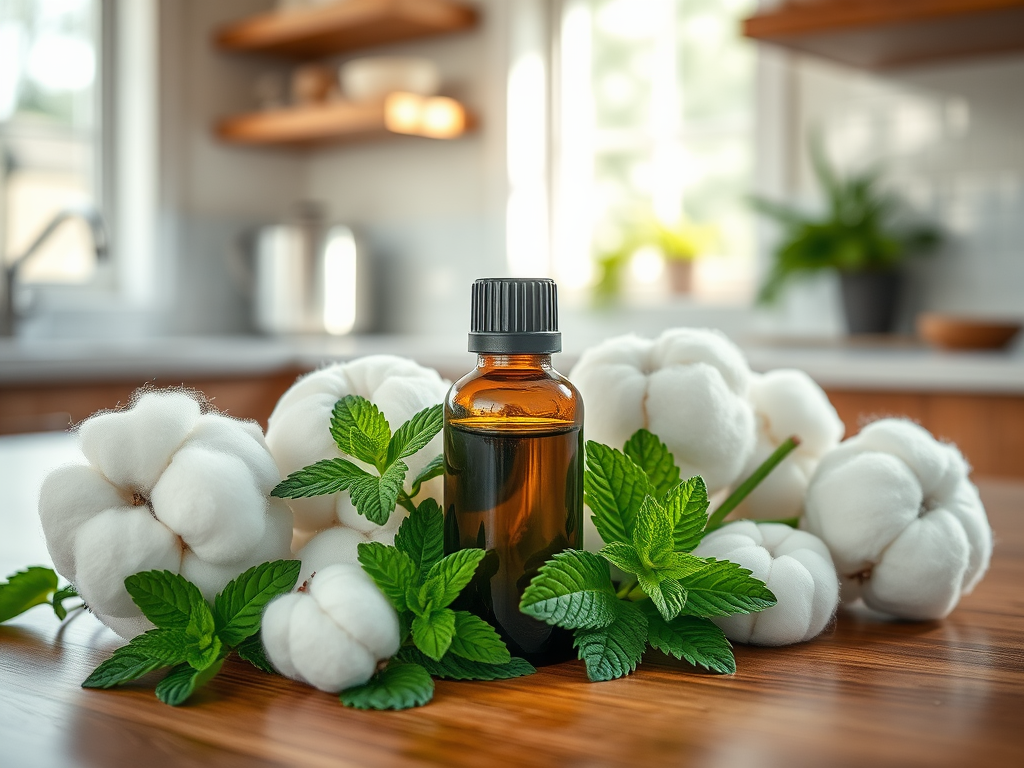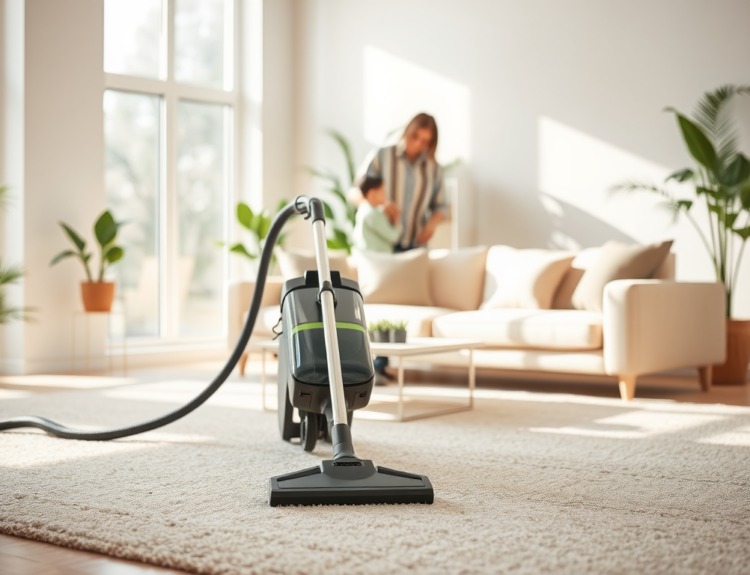For many, the sight of a mouse is enough to send shivers down their spine. These small creatures can invade homes unexpectedly, causing both chaos and concern. While conventional methods of pest control often involve harsh chemicals and traps, there’s a growing trend towards using natural repellents. Surprisingly, common scents found right in our kitchens and bathrooms can effectively keep mice at bay. By harnessing the power of the right aromas, you can create a less inviting atmosphere for these unwelcome guests without compromising your family’s health or the environment. Here we delve deeper into five everyday scents that are known to repel mice, providing simple methods to incorporate them into your pest control strategy.
Peppermint Oil

Peppermint oil stands out as one of the most potent natural repellents available. The intense and refreshing aroma overwhelms the sensitive olfactory senses of mice, making them think twice before entering an area where it’s present. Not only is this oil effective, but it also leaves behind a fresh smell that humans find pleasant. Its versatility allows for multiple application methods, enabling you to deploy it in your living space effortlessly. Utilizing peppermint oil creates a dual benefit: while your home smells invigorating, it simultaneously deters these unwanted rodents. The ease of use and pleasant scent makes it a favored choice among many households.
- Cotton Balls: Soak cotton balls in peppermint oil and place them in corners of rooms or near potential entry points.
- Spray Solution: Combine a few drops of peppermint oil with water in a spray bottle and apply it along baseboards and around doorways.
- Plant Strategy: Consider placing peppermint plants around your home, as the natural scent can help deter mice too.
Cayenne Pepper

Another pantry staple that proves effective in repelling mice is cayenne pepper. Known for its spicy kick in culinary dishes, this vibrant powder brings the heat in more ways than one. The strong, pungent scent irritates mice, prompting them to avoid areas where it’s sprinkled. This approach not only serves as a deterrent but also elevates the flavor of your meals, making it a truly versatile option. It’s essential to approach this method carefully, as too much cayenne may deter not just mice but also your household members. With stay-at-home strategies gaining popularity, why not leverage this multi-purpose spice?
- Sprinkling: Lightly sprinkle cayenne pepper in areas with noticeable mouse activity, such as near droppings or entry points.
- Pest Spray: Mix cayenne pepper with water and create a spray solution to target specific areas.
- Food Boundaries: Use cayenne pepper around the perimeter of your home to discourage mice from entering.
Vinegar
Highly revered for its cleaning properties, vinegar also doubles as an effective mouse repellent. The strong odor emitted by vinegar is not only unmistakable but disrupts a mouse’s ability to navigate and find food. Because of its acidity, vinegar serves as a natural cleaning agent, making it a double-duty solution for homeowners. Regularly using vinegar can keep your home both sanitized and free of rodents. Additionally, its non-toxic nature makes it safe for pets and children, all while ensuring that your space remains fresh. An added benefit is that vinegar is affordable and readily available, enhancing its usefulness in keeping mice away.
- Wiping Surfaces: Use a solution of vinegar and water to wipe down surfaces where food is prepared.
- Vinegar Traps: Place bowls filled with vinegar in areas prone to mouse activity, as the scent can drive them away.
- Odor Masking: Enhance the vinegar scent by mixing it with other essential oils that also repel mice.
Eucalyptus Oil
Eucalyptus oil brings a refreshing scent that humans adore while serving as a potent mouse deterrent. This oil’s aromatic properties contain compounds that mice find overwhelming, resulting in them steering clear of its vicinity. Eucalyptus not only maintains a pleasant scent throughout your home, transforming it into a sanctuary, but it also adds a touch of nature indoors. Sprucing up the indoor atmosphere while warding off pests is an effective balance most homeowners strive for. Its strong presence can easily fill a room, establishing a strong barrier against potential intruders. The best part? You can use it in various ways, ensuring it complements your decor and lifestyle.
- Diffusers: Use an essential oil diffuser to fill your space with the aroma of eucalyptus oil.
- Scented Sachets: Create small sachets filled with eucalyptus leaves to hang near entry points or nesting areas.
- Incorporation with Cleaners: Add eucalyptus oil to your cleaning supplies for an added layer of repellent effect.
| Scents | Mouse Repellent Qualities |
|---|---|
| Peppermint Oil | Strong aroma overwhelms olfactory senses |
| Cayenne Pepper | Pungent scent irritates nasal passages |
| Vinegar | Disrupts navigation with its strong odor |
| Eucalyptus Oil | Powerful aroma deters entry and nesting |
| Lavender | Soothing scent repels and calms the environment |
Lavender
Often celebrated for its relaxing effects, lavender also plays a pivotal role in keeping mice at bay. The calming aroma associated with this flower is overwhelming to mice and serves as an effective deterrent. Incorporating lavender into your home not only offers a pleasant fragrance but also builds an atmosphere that feels inviting to everyone except mice. Additionally, the versatility of lavender allows homeowners to utilize it in multiple forms, whether as dried flowers, essential oils, or sprays. Its natural properties make it an excellent choice for both pest control and enhancing your home’s ambiance. So, why not enjoy the benefits of its aroma while keeping those pesky rodents away?
- Dried Lavender: Place dried lavender sachets in cupboards, drawers, and near windows to deter mice.
- Lavender Oil Spray: Combine lavender oil with water to create a fragrant deterrent for your home.
- Plant Lavender: Growing lavender plants indoors or outdoors can continuously emit a pleasant scent while keeping mice away.
Conclusion
Incorporating everyday scents to repel mice is both an effective and eco-conscious strategy for pest control. By leveraging the natural properties of peppermint oil, cayenne pepper, vinegar, eucalyptus oil, and lavender, you can create a less welcoming environment for these unwanted visitors. Not only do these methods provide immediate benefits, but they also add fresh aromas to your living space. It’s a holistic approach that emphasizes health and safety while addressing a common household problem. Take control of your pest issues naturally and transform your home into an inviting haven for you and your loved ones, free from the disturbances of mice.
Frequently Asked Questions
- What scents do mice hate the most? Mice are particularly repelled by peppermint, eucalyptus, and lavender scents.
- How often should I reapply these natural repellents? It’s advisable to reapply every couple of weeks or after cleaning surfaces to maintain their effectiveness.
- Are these scents safe for pets and children? Most of these scents are generally safe for pets and children, but it’s always best to monitor their reactions and consult with a veterinarian if uncertain.
- Can I use these scents outdoors? Yes, you can use these scents outdoors, but be mindful of the elements that may dilute their effectiveness, such as rain.
- Do I need to combine multiple scents for better results? While each scent can be effective on its own, combining them can enhance overall effectiveness and provide a broader range of deterrents.



